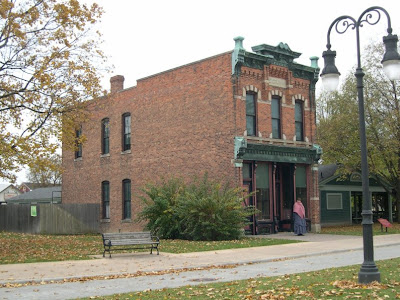Plympton Family Home (formerly known as Plympton House)
 The brick over the large fireplace of the Plympton house dates to 1640, to the original home of Thomas Plympton. Plympton was a founding father of the Puritan settlement of Sudbury, Massachusetts, and lived there with his wife, Abigail, and their seven children. This, after he came to North America from England as an indentured servant.
The brick over the large fireplace of the Plympton house dates to 1640, to the original home of Thomas Plympton. Plympton was a founding father of the Puritan settlement of Sudbury, Massachusetts, and lived there with his wife, Abigail, and their seven children. This, after he came to North America from England as an indentured servant. According to the 1941 guidebook, Plympton was slain by Indians in 1676, but his descendants, including a Thomas Plympton who actively took part in the American Revolution, continued to live in this one room home.
According to the 1941 guidebook, Plympton was slain by Indians in 1676, but his descendants, including a Thomas Plympton who actively took part in the American Revolution, continued to live in this one room home. The original house of the 1st Thomas Plympton burned down in the early 1700's, and the generation of the family who were living there at the time rebuilt the home around the original chimney.
The original house of the 1st Thomas Plympton burned down in the early 1700's, and the generation of the family who were living there at the time rebuilt the home around the original chimney. It is considered to be the oldest American home in Greenfield Village.
It is considered to be the oldest American home in Greenfield Village.An unusual feature in this home is the convenient inside covered well, seen to the left of the ladder. Most wells, during this period in time, were outside the home.
 This primitive one-roomed structure, with its simple sheathed walls and a low, open raftered ceiling with a central "summer" beam, reflects the typical colonial architecture of the earliest period of New England, and the furnishings show the simplicity of home life of these early times.
This primitive one-roomed structure, with its simple sheathed walls and a low, open raftered ceiling with a central "summer" beam, reflects the typical colonial architecture of the earliest period of New England, and the furnishings show the simplicity of home life of these early times.The house is listed as being brought to Greenfield Village in 1933, but, I do not find it among the entries in the 1935/36 guidebook, which tells me it may not have been totally restored for viewing until a few years after.
Although this beautiful representation of an early colonial home is open for visitors to enter, it is plexi-glassed off which can make it difficult to photograph the inside of the structure.
 Notice the plexi-glass at the entrance of the building. This picture was taken through an opposite window.
Notice the plexi-glass at the entrance of the building. This picture was taken through an opposite window.One can also push a button to hear a recording of the "Plympton Family" in action - a sort of "radio skit" of the family sitting down for supper. I suppose it's to help the patron use their imagination while viewing the home.
It is my understanding that, because the Daggett Farm and the Giddings House are being used as representations of colonial living by way of costumed presenters, the plexi-glass and push-button recording will remain in the Plympton Home.
 I am thankful, however, that this wonderful piece of social history remains as a companion to the others of its era, showing the diversity of colonial living.
I am thankful, however, that this wonderful piece of social history remains as a companion to the others of its era, showing the diversity of colonial living..



Comments